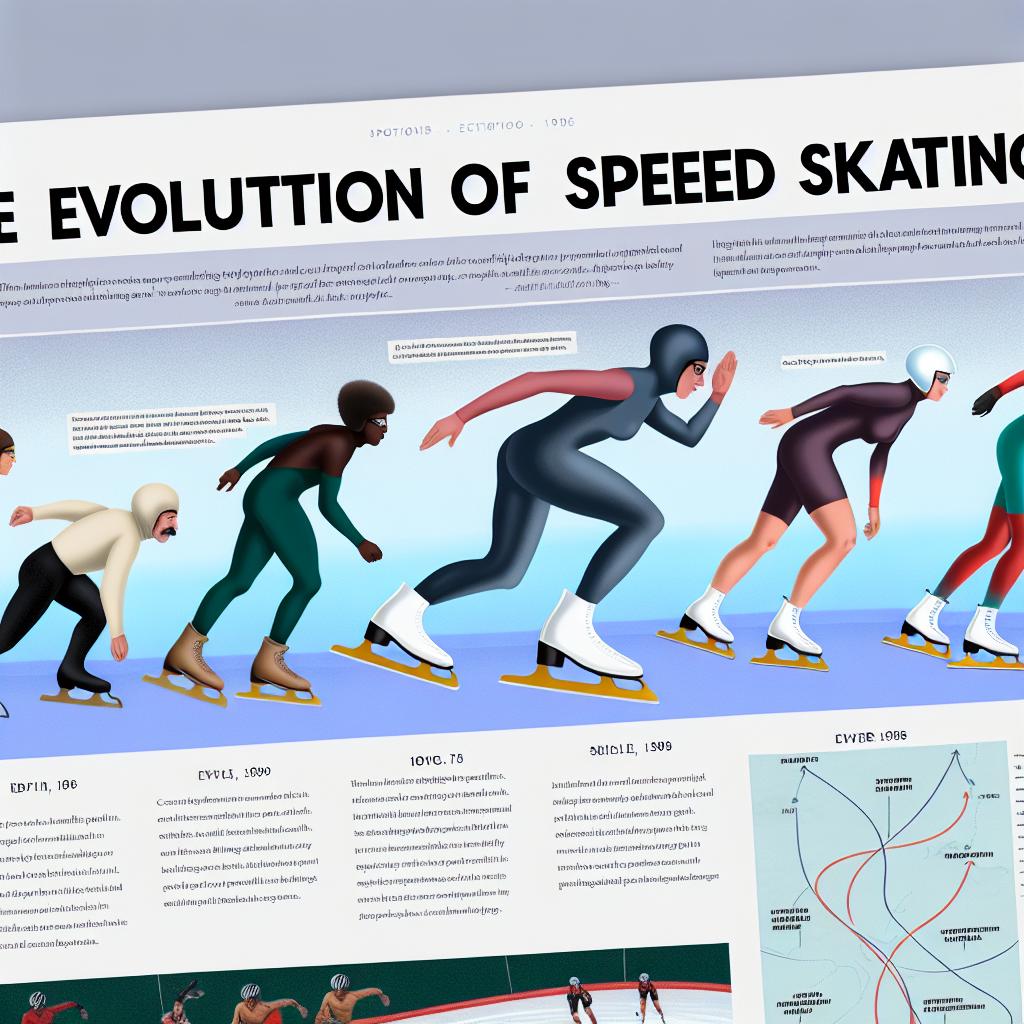Origins of Speed Skating
The history of speed skating is a fascinating journey back in time that spans approximately a millennium. Emerging from the snowy and icy terrains of Scandinavia, speed skating as an activity took shape in a region where the winter landscape transformed countless lakes and rivers into natural ice arenas. Here, the very first skaters took to the ice using rudimentary equipment, which consisted of skates crafted from wood or animal bones. These primitive skates were bound to the feet of the skaters using leather straps, a testament to the ingenuity of those early adventurers who unknowingly laid the groundwork for a sport that would eventually captivate people worldwide.
Initially, skating served as a means of both transportation and recreation in these cold climates. It was not until centuries later that this enjoyable pastime would formalize into a competitive endeavor. The early practices of skating were seamless blends of necessity and leisure, offering insights into the daily lives of those living in icy regions, illustrating their resourcefulness and adaptive spirit.
Evolution in Equipment
A pivotal aspect of speed skating’s development is the progressive evolution of its equipment. Initially, wooden or bone skates sufficed; however, as the sport gained popularity and complexity, skaters sought innovations to enhance performance. The 19th century witnessed a remarkable transformation as steel blades replaced the earlier rudimentary materials, significantly enhancing the speed and efficiency of the skates. This shift is notably linked to the creative contributions of Dutch enthusiasts, who recognized the immense potential locked within these steel blades.
Moving into the 20th century, the design of speed skates advanced further to better accommodate the increasing demands of the sport. Skates evolved to feature longer blades, measuring approximately 14–18 inches, allowing skaters greater control and longer strides. The boots were redesigned to offer better ankle support, facilitating powerful strides. Today’s speed skates, with their sleek carbon fiber construction, offer an optimal blend of speed and durability, ensuring athletes perform at their best.
Organized Competition
As the equipment improved, so did the structure of speed skating as an organized sport. The early 19th century marked the beginning of speed skating’s formal competition framework. By the middle of the century, speed skating had solidified its presence with clubs forming across Europe and North America, notably in countries like the Netherlands, the United Kingdom, and the United States.
The emergence of structured competitions soon followed, leading to officially recognized championships. A significant milestone in speed skating’s journey to becoming an internationally recognized sport was the inaugural World Championships held in 1889, hosted in Amsterdam. Just a few years later, in 1892, the International Skating Union (ISU) was established as the global governing body. The ISU was instrumental in articulating the rules and standards that standardized competitions, enabling a global dialogue and exchange among skaters and enthusiasts, unifying the sport across borders.
Inclusion in the Olympic Games
Speed skating marked its entry on the grand stage of the international sports arena by featuring in the first Winter Olympics in Chamonix in 1924. Initially, only men participated in speed skating events, which reflected the broader trends and norms of the time. However, the landscape of the sport—and more broadly, the Olympic Games—evolved over the ensuing decades.
In 1960, the inclusion of women’s events at the Winter Olympics in Squaw Valley represented a pivotal moment, broadening the sport’s appeal and inclusivity. This significant shift not only showcased the athletic prowess of female skaters but also reinforced speed skating’s status as a core Olympic sport. Over time, the range of events has expanded, echoing the growing interest and investment in speed skating from both genders.
Modern Competitions and Disciplines
Today’s speed skating competitions are typically divided into two primary categories: long track and short track events. Long track speed skating, with its 400-meter oval track, hosts individual races that cover varying distances from as short as 500 meters to as long as 10,000 meters. These events emphasize endurance and technique, testing the skaters’ ability to sustain high speeds over longer distances.
Short track speed skating occurs on a much smaller 111-meter track, bringing with it a different set of challenges and thrills. These races are shorter and more intense, demanding not only speed but also strategic maneuvering, as skaters jostle for position. The smaller track and closer pack racing can lead to high-speed collisions and spectacular finishes, captivating audiences with its unpredictable nature.
Future Directions
As we look to the future, speed skating continues to evolve through technological innovation and refined training methods, continually pushing the boundaries of speed and endurance. Advances in materials and designs, paired with more sophisticated athletic conditioning programs, promise to elevate performance levels further. Efforts to globalize speed skating’s reach are underway, working to extend its popularity beyond its traditional northern European and North American bases.
Moreover, there is an increasing focus on integrating environmentally sustainable practices in the sport. These measures include developing eco-friendly ice rinks and adopting greener technologies for rink maintenance, reflecting a broader societal shift toward greater ecological awareness.
As speed skating develops, it will undoubtedly continue to captivate with its unique blend of tradition and cutting-edge advancements. Whether through thrilling short track maneuvers or the serene prowess displayed on the long track, speed skating remains a remarkable testament to human ingenuity and endurance. The future holds promise not only for the sport’s expansion and modernization but also for its enduring ability to engage audiences around the globe.
